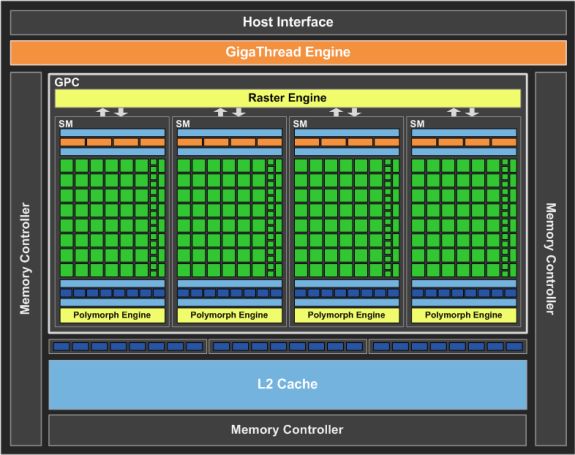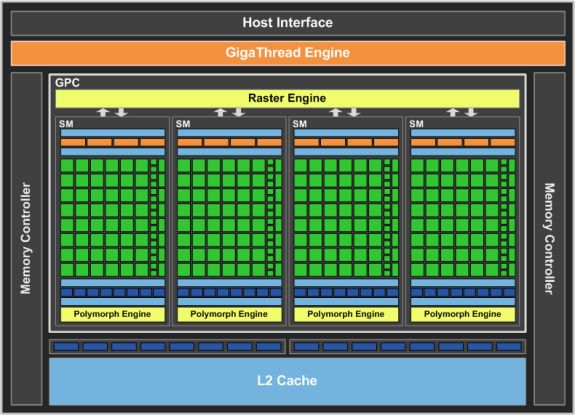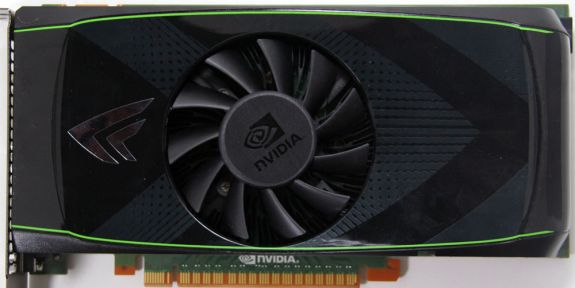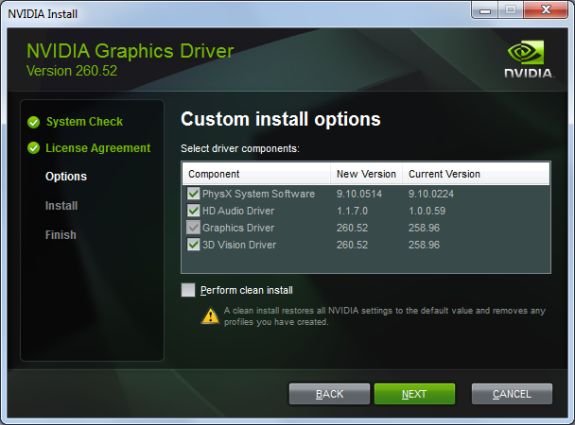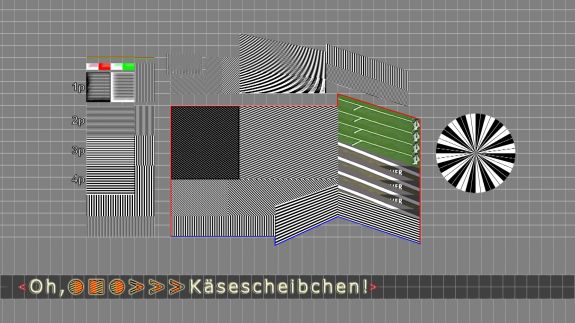
Original Link: https://www.anandtech.com/show/3909/nvidias-geforce-gts-450-pushing-fermi-in-to-the-mainstream
NVIDIA’s GeForce GTS 450: Pushing Fermi In To The Mainstream
by Ryan Smith on September 13, 2010 12:02 AM EST- Posted in
- Fermi
- GeForce GTS 450
- GF106
- GPUs
- NVIDIA
After the drawn out launch of GF100 and the GTX 400 series earlier this year, NVIDIA has been firing on all cylinders when it comes to the launch of the rest of the Fermi family. In July we saw the launch of the GF104 GPU and the GTX 460 it powers, providing a surprising tweak to the Fermi architecture on what should have been a simple waterfall part, and in the process trampling AMD’s Radeon HD 5830 at the $200 price point. For the first time in over a year we saw an NVIDIA product come out that was hyper-competitive on performance and pricing, the kind of competition we sorely miss.
Now 2 months after that launch we’re going to find out if lightning strikes twice. Today NVIDIA is launching the next desktop video card in the 400 series: GTS 450 Powering it is their new Fermi family GPU – GF106 – the next in the line of successively smaller Fermi GPUs for cheaper products. Targeted directly against AMD’s Radeon HD 5700 series, does it have what it takes to dethrone AMD's mainstream lineup?
| GTX 480 | GTX 460 768MB | GTX 285 | GTS 450 | GTS 250 | |
| Stream Processors | 480 | 336 | 240 | 192 | 128 |
| Texture Address / Filtering | 60/60 | 56/56 | 80 / 80 | 32/32 | 64/64 |
| ROPs | 48 | 24 | 32 | 16 | 16 |
| Core Clock | 700MHz | 675MHz | 648MHz | 783MHz | 738MHz |
| Shader Clock | 1401MHz | 1350MHz | 1476MHz | 1566MHz | 1836MHz |
| Memory Clock | 924MHz (3696MHz data rate) GDDR5 | 900MHz (3.6GHz data rate) GDDR5 | 1242MHz (2484MHz data rate) GDDR3 | 902MHz (3.608GHz data rate) GDDR5 | 1100MHz (2.2GHz data rate) GDDR3 |
| Memory Bus Width | 384-bit | 192-bit | 512-bit | 128-bit | 256-bit |
| Frame Buffer | 1.5GB | 768MB | 1GB | 1GB | 1GB |
| FP64 | 1/8 FP32 | 1/12 FP32 | 1/12 FP32 | 1/12 FP32 | N/A |
| Transistor Count | 3B | 1.95B | 1.4B | 1.17B | 754M |
| Manufacturing Process | TSMC 40nm | TSMC 40nm | TSMC 55nm | TSMC 40nm | TSMC 55nm |
| Price Point | $499 | $169 | N/A | $129 | $99 |
At the heart of the GTS 450 is the GF106 GPU, which is probably not one of NVIDIA’s best-kept secrets. Traditionally GPUs launch in desktop products first before getting the mobile treatment, but in the case of the 400 series it’s a bit of the inverse. GF100 and GF104 launched in desktop products first, but GF106 and GF108 were launched in a somewhat quiet manner earlier this month when NVIDIA unveiled their mobile 400 series lineup. So GF106 itself is not being unveiled today, but we do have more concrete details about it that weren’t available for the mobile launch.
If you recall GF104, it set itself up nicely to be cut-down for GF106. With 384 CUDA cores spread over 2 GPCs and 4 sets of ROPs & memory controllers, half of a GF104 and what presumably would be a GF106 was easy to see. Instead what we’re getting is a bit of a curveball, as GF106 is a bit more than half of a GF104.
Fundamentally it’s GF104-derrived, sporting the 48 CUDA cores per SM design that GF104 pioneered. But while NVIDIA did end up removing 1 of the 2 GPCs (and by extension, half the CUDA cores), they didn’t halve the ROPs and memory controllers while they were at it. As a result GF106 is a bit more than we bargained for, entering the world as a 192 CUDA core part but with 3 sets of memory controllers and ROPs, for a combined total of a 192bit memory bus, 384KB of L2 cache, and 24 ROPs. Internally this is organized as a 1 GPC part containing 4 SMs, resulting in GF106 having 1 Raster Engine and 4 Polymorph engines; meanwhile the contents of each SM remains unchanged from GF104, so for each SM there are 48 CUDA cores and 4 texture units (for a total of 16 texture units in GF106) along with its Polymorph Engine.
But like GF104, GF106 won’t immediately be seen in its full form. NVIDIA is launching their desktop GF106 cards with 1 of the 3 sets of memory controller/ROP pairs disabled. As a result GTS 450 as we know it today is going to be a 192 CUDA core part, but using a 128bit memory bus with 256KB of L2 cache and 16 ROPs. For the time being the only product that’s been announced that will use a full GF106 GPU is the GeForce GT 460M, which will be available in a 192bit configuration with all 192 CUDA cores enabled.
At 1.17 billion transistors GF106 is not particularly big; NVIDIA won’t give us the die size, but a really rough estimate on our part is 240mm2(15mm x 16mm). With that in mind, we hear that 40nm yields at TSMC are caught up with 55nm yields, so we’re not entirely sure why NVIDIA is launching only harvested parts today. At first glance it seems like they could launch a 2nd, fully-equipped card for a higher price and profit margin, but admittedly we don’t have all the facts. The biggest question of course is whether enabling the extra memory controller and ROPs provides a material benefit – if GF106 is shader limited at these clockspeeds, then perhaps it isn’t worth it. Hopefully one day we’ll find out if this is the case.
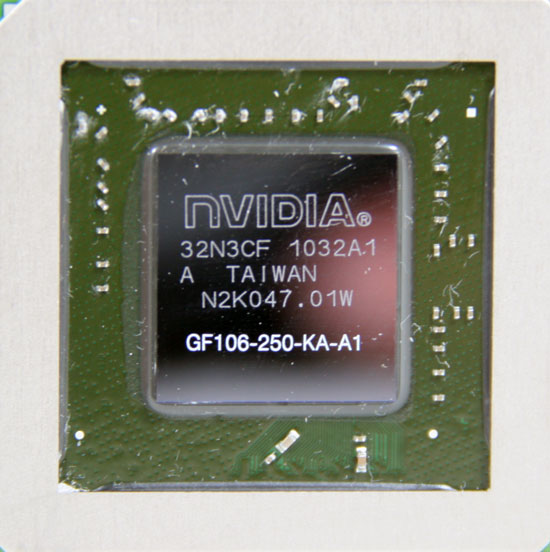
In any case, the star of the show today is GTS 450, the newest member of the GeForce family and intended for gaming at resolutions around 1680x1050. It’s clocked at 783MHz for the core, 1566MHz for the shaders, and 902MHz (3.6GHz effective) for its GDDR5 RAM. Currently it’s only being offered in a 1GB configuration; however we wouldn’t be shocked to see a 512MB part further down the line at even more budget-oriented prices. NVIDIA is launching the card at $129 and will be using it to replace the GTS 250, the last and most powerful card based on NVIDIA’s long-lived workhorse, G92. This makes GF106 the de-facto successor to G92, a very tough act to follow.
NVIDIA puts the TDP for a reference GTS 450 at 106W, though as NVIDIA likes to note this is a “real world” number and FurMark can exceed this. NVIDIA does not provide an idle TDP for GTS 450, however as you’ll see in our tests it’s clearly quite low. Like the GTX 460, NVIDIA is heavily pushing the overclockability of GTS 450, and as a result a large number of factory-overclocked cards will be launching alongside reference-clocked cards. This pushes the TDP further out but it improves performance a great deal – the fastest of the vendor cards we’re looking at today is 930MHz, a 19% factory overclock. These cards will of course command a higher price, although we hear some of the lesser overclocked cards may hit the same $129 price as the reference-clocked cards.
Finally, NVIDIA is once again repricing the 400 series lineup with this launch. The MSRP of the GTX 470 and GTX 465 are down to $300 and $230 respectively. Meanwhile GTX 460 is also getting a price drop – the 1GB version drops by $10 to $220 while the 768MB version takes a much bigger price drop of $30 to $170. At $200 the 768MB GTX 460 was already a good deal, but as we noted in our on review for $30 more it made much more sense to grab the 1GB card with its wider memory bus and additional ROPs. As a consequence NVIDIA has driven a larger price gap between the two cards so that the 768MB version isn’t passed up in favor of the 1GB version as often.
Finally we have the GTS 450, which is launching at $130. NVIDIA was clearly going for a price between the Radeon HD 5770 and 5750, however AMD apparently expected this and has worked with partners to nudge prices down – the cheapest 5770s can be found for $130 after rebate. If these prices hold then the GTS 450 is basically in lock-step with the 5770, but we’re only seeing a few 5770s at this price so it may prove to be a temporary launch day counter-attack. In any case AMD is definitely under some pricing pressure thanks to the GTX 460 price drop – the GTX 460 is significantly faster than the 5770, so they can’t realistically charge more than $150 for it and leaving them few options besides bringing prices down and putting pressure on the GTS 450.
| September 2010 Video Card MSRPs | ||
| NVIDIA | Price | AMD |
| $700 | Radeon HD 5970 | |
| $500 | ||
|
|
$360 | Radeon HD 5870 |
| $300 | ||
|
|
$270 | Radeon HD 5850 |
| $230 | ||
| $220 | ||
| $170 | Radeon HD 5830 | |
| $130 | Radeon HD 5770 | |
Meet the GTS 450
The reference GTS 450 takes a number of cues from the GTX 460, and without labeling on the card it’s actually quite easy to confuse with its bigger sibling. Top-side it uses the same concave shroud and partially-raised fan setup at the GTX 460, and only when you remove these cooling components do you find a simpler circular all-aluminum heatsink between the fan and the GF106 GPU.
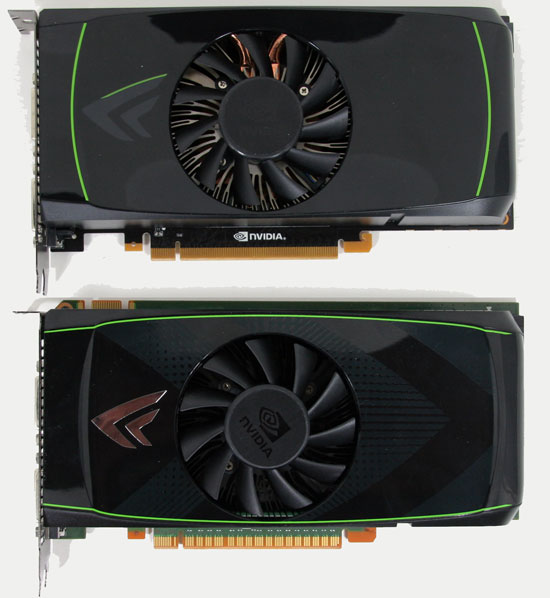
Top: GTX 460. Bottom: GTS 450
Since this uses the same cooler design as the GTX 460, it has the same properties: it’s not a fully-exhausting design. The cooler on the reference GTS 450 exhausts towards both the front and the rear of the case, so some degree of case cooling is important. At only 106W TDP this shouldn’t be much of an issue, but there needs to be some airflow within the case.
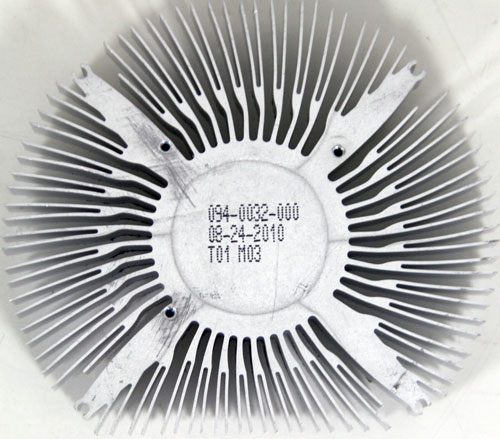
Meanwhile the PCB and resulting card measure 8.25” long, the same as the GTX 460. This coincidentally is the same length as the reference Radeon HD 5770. The PCB houses pads for 12 GDDR5 memory chips with 6 pads on each the front and back, highlighting the fact that this card isn’t using a full GF106 GPU. With only a 106W TDP, only a single 6-pin PCIe power socket is required to power the card. As with the GTX 460, this socket is rear-facing.
The PCB itself is fairly unremarkable. As is the case with cheaper cards the components are a bit cheaper – you can see a ring-choke near the PCIe power socket. With the card’s fairly low TDP the MOSFETs serving as part of the VRM setup do not require any cooling with the breeze from the fan being enough to cool them at default voltages. The card comes equipped with 8 Samsung GDDR5 memory chips, rated for 4GHz operation. This means there’s a bit of headroom for RAM overclocking if the memory controller is willing to cooperate.
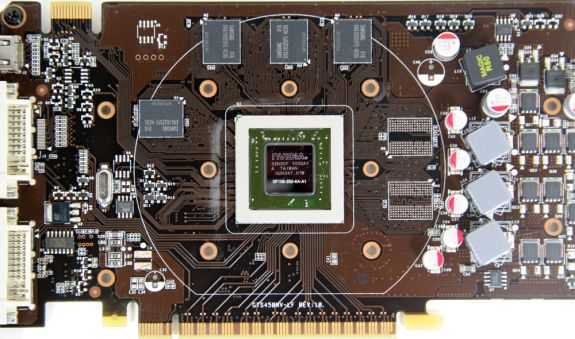
GTS 450 Reference Design PCB (EVGA)
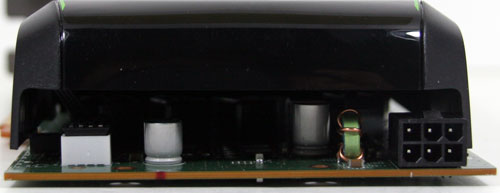
The port configuration remains unchanged from the rest of the 400 series: 2 DVI ports and a mini-HDMI port. The GF106 GPU can only drive 2 displays just like the rest of the Fermi family, so for output options pick any 2 ports. Like the rest of the 400 series, the GTS 400 series is also surround vision capable, so if you have a second card you can SLI them together to gain an additional display output for triple-monitor usage. As this is a lower-end product 3D Vision Surround is not supported due to the lack of performance, but NVIDIA Surround (2D) is supported.

Finally, as was the case with the GTX 460 launch, a number of partners will be launching their own designs today, which we are covering in our companion article that focuses on them. All of these cards are using the NVIDIA reference design or what appears to be a minor variation of it; the big difference on the hardware side of things is the cooler used and bracing methods.
Forceware 260 & Bitstreaming Audio
Launching alongside the GTS 450 is NVIDIA’s Forceware 260 driver series, which should be available for download later this morning. This release brings an interesting mix of changes to performance, features, and even the installation routine.
We’ll start with the installer. The old Installshield installer is out in favor of a new NVIDIA-developed installer. By moving to their own installer, NVIDIA was able to do some consolidation and some simplification of the install process. Consolidation comes in the form of all of NVIDIA’s major driver packages being in the same installer. Previously the 3D Vision driver set was a separate download from the main drivers; now they’re part of the main driver bundle. In exchange for consolidating their drivers, NVIDIA now offers the ability to pick & choose which driver components to wish to install; currently there are the main drivers, PhysX, the audio drivers, and the 3D Vision drivers. If you’ve used the AMD Catalyst installer, then you should be familiar with this.
Meanwhile simplification comes from a few different changes. When doing a custom installation NVIDIA offers the ability to do a clean install straight from the driver installer, vastly simplifying the clean install process and eliminating the need for a 3rd party utility to do this. Do keep in mind however that a clean install cleans everything including saved profiles, and under normal circumstances a clean install should not be required.
The other reason we call these drivers simple is that the new installer is much faster than the old Installshield installer. NVIDIA specifically cites SLI situations – where the old installer would install the same drivers twice (once for each card) – but even in a single card situation the process is noticeably faster; we shaved 15 seconds off of the installation process compared to the 258.96 drivers. With any luck you aren’t installing drivers often enough that 15 seconds makes a huge difference (and if you are, you’re probably me) but if you are, then there’s definitely a perk for you in these drivers.
Finally, the size of the driver package remains virtually unchanged from the previous driver release. Our 64bit 260.52 international beta installer is 154MB, while the 64bit 258.96 international installer is 153MB; if anything it’s slightly smaller after factoring in the fact that it now contains the 3D Vision drivers too. But it goes without saying that modern video drivers from both AMD and NVIDIA are ridiculously huge, and this new installer doesn’t do anything to change that.
Meanwhile NVIDIA is also pushing this driver release as another big performance-boosting release. Compared to the 256 release for the GTX 460 it’s not nearly as large or as widespread of a performance boost, but there are several targeted titles that got performance boosts, mostly in SLI mode. As far as our own benchmark suite is concerned, the only titles we saw receiving a major improvement in single-GPU operation were Mass Effect 2 where performance improved 11% with our 768MB GTX 460, and STALKER: Call of Pripyat where performance improved 5% on the same card at the same resolution.
Finally, this release enabled bitstreaming audio for the newer members of the 400 series. As you may recall in our GTX 460 article, starting with GF104 NVIDIA has given the hardware the capability to bitstream the lossless audio formats DTS-HD Master Audio and Dolby TrueHD; GF100 and GT21x were limited to 8 channel LPCM. When the GTX 460 launched the drivers weren’t ready, and only unprotected bitstreaming was working. With this release the protected audio path is working, allowing bitstreaming of lossless audio from protected sources such as Blu-Ray discs.
We didn’t have the chance to test this on a GTS 450 as we had to catch a flight to IDF, however we did test this against a GTX 460 with the new drivers and it worked as it was supposed to.
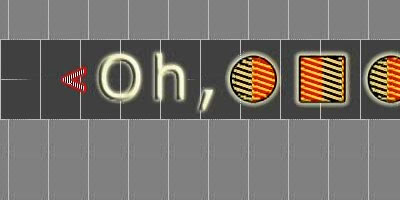
Cheese Slices: GTS 450 Deinterlacing
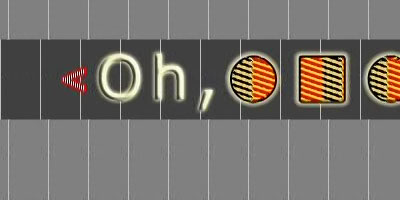
Cheese Slices: Radeon HD 5670 Deinterlacing
For those of you looking at a GTS 450 as an HTPC card, we also quickly ran our favorite Cheese Slices test as a quick look at deinterlacing quality. As this is a test of computer power (if you have enough shaders, you can pass the test) there aren’t any huge surprises here. When compared to the Radeon HD 5670, the GTS 450 does a slightly better job properly deinterlacing the angled lines within the shapes at the bottom of the screen, but it does a poorer job deinterlacing a box full of angled lines elsewhere on the screen. Overall this is a wash between the two cards and par for the course for modern cards with this test.
On one last note, these don’t appear to be NVIDIA’s best drivers with respect to everything working. The 260.52 beta drivers we’re using have a bug in OpenCL that keeps it from working, which is why you will see that we have dropped OpenCL benchmarks in today’s review. NVIDIA tells us that the version of the 260 drivers being released later this morning have the issue fixed, but it’s not a particularly encouraging sign since we don’t normally run in to issues with their beta drivers.
The Test
For today’s launch, we’re looking at the NVIDIA reference card along with samples from Asus, Palit, EVGA, and Sparkle (under their Calibre brand). For the sake of brevity we’ve split off our in-depth look at those cards in to a companion article, but we’re still including them in the charts for this GTS 450 review. 3 of these cards are overclocked to around 920MHz, so this provides a good idea of where the performance of top overclocked cards will lie.
Since NVIDIA gave us a pair of reference cards, we’re also looking a SLI performance. As GTS 450 is a mainstream card we consider buying a larger card to be a better solution than SLIing lesser cards (unless you need surround vision, at least) but this is something to consider if you have an SLI-capable motherboard and may add a second card in the future.
We’ve also added a 9800 GTX to the mix to showcase G92 performance, as we don’t have a GTS 250 available. It shouldn’t be used as a proxy as GTS 250 cards are clocked higher and most have additional RAM, but it offers a glimpse of where GTS 450 stands compared to G92 based cards.
Finally, we’re using the latest AMD Catalyst drivers for our Radeon HD 5700 series benchmarks: 10.8b.
| CPU: | Intel Core i7-920 @ 3.33GHz |
| Motherboard: | Asus Rampage II Extreme |
| Chipset Drivers: | Intel 9.1.1.1015 (Intel) |
| Hard Disk: | OCZ Summit (120GB) |
| Memory: | Patriot Viper DDR3-1333 3 x 2GB (7-7-7-20) |
| Video Cards: |
AMD Radeon HD 5970 AMD Radeon HD 5870 AMD Radeon HD 5850 AMD Radeon HD 5830 AMD Radeon HD 5770 AMD Radeon HD 5750 AMD Radeon HD 4890 AMD Radeon HD 4870 1GB AMD Radeon HD 4850 AMD Radeon HD 3870 NVIDIA GeForce GTX 480 NVIDIA GeForce GTX 470 NVIDIA GeForce GTX 465 NVIDIA GeForce GTX 295 NVIDIA GeForce GTX 285 NVIDIA GeForce GTX 275 NVIDIA GeForce GTX 260 Core 216 NVIDIA GeForce 8800 GT NVIDIA GeForce GTX 460 1GB NVIDIA GeForce GTX 460 768MB NVIDIA GeForce GTS 450 Asus ENGTS450 Top Palit GeForce GTS 450 Sonic Platinum EVGA GeForce GTS 450 FTW Sparkle Calibre X450G |
| Video Drivers: |
NVIDIA ForceWare 197.13 NVIDIA ForceWare 257.15 Beta NVIDIA ForceWare 258.80 Beta NVIDIA ForceWare 260.52 Beta AMD Catalyst 10.3a AMD Catalyst 10.8b |
| OS: | Windows 7 Ultimate 64-bit |
Crysis: Warhead
Kicking things off as always is Crysis: Warhead, still the toughest game in our benchmark suite.Even 2 years since the release of the original Crysis, “but can it run Crysis?” is still an important question.
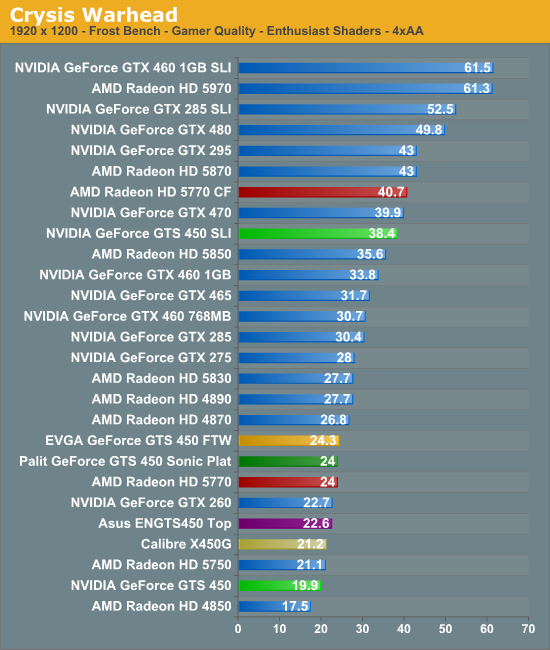
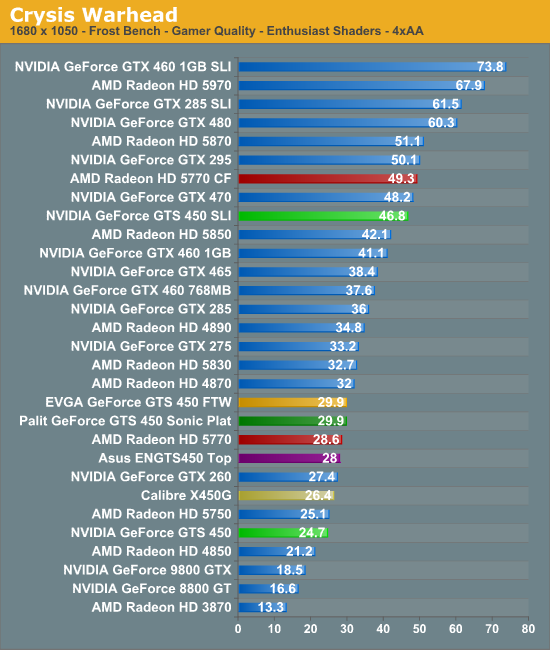
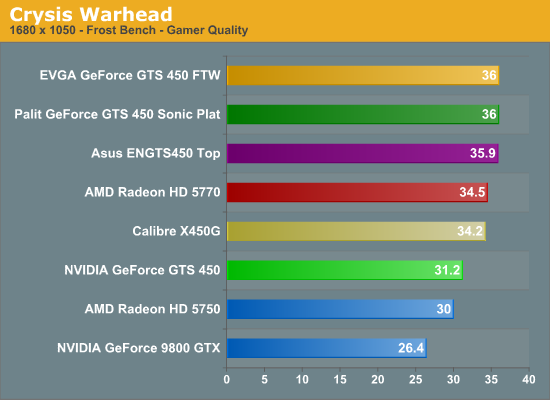
Ideally, NVIDIA would like the GTS 450 to be able to play everything at 1680x1050 at high settings with 4x anti-aliasing. Crysis of course eludes this, just as it does all attempts to play it at a decent framerate. Even the factory overclocked cards can’t muster 30fps here. For that we have to drop our settings to Gamer quality without AA.
Overall, at reference clocks the GTS 450 doesn’t fare so well here. At our standard 1680 setting it just falls to the Radeon HD 5750, and is miles away from the 5770. At Gamer quality it switches positions with the 5750, but still has quite a gap with the 5770. However the overclocked cards fare much better here, and they can bring the GTS 450 up to parity with the 5770. Since the cheapest 5770s are selling for no more than the GTS 450, ideally it (or its overclocked variants) need to be able to keep up with the 5770.
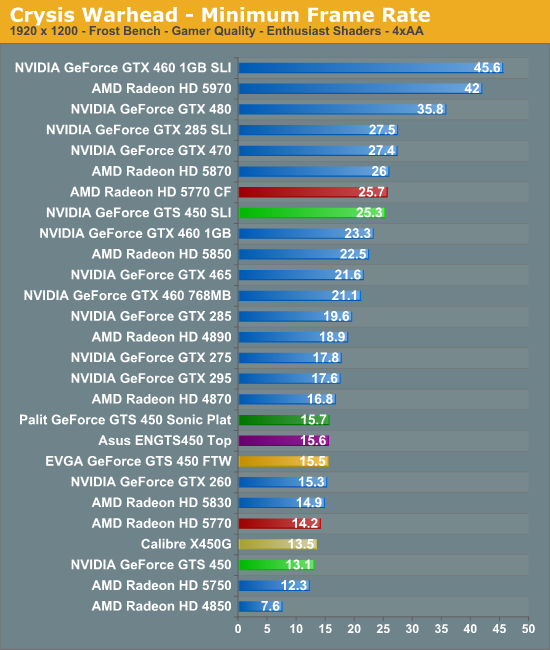
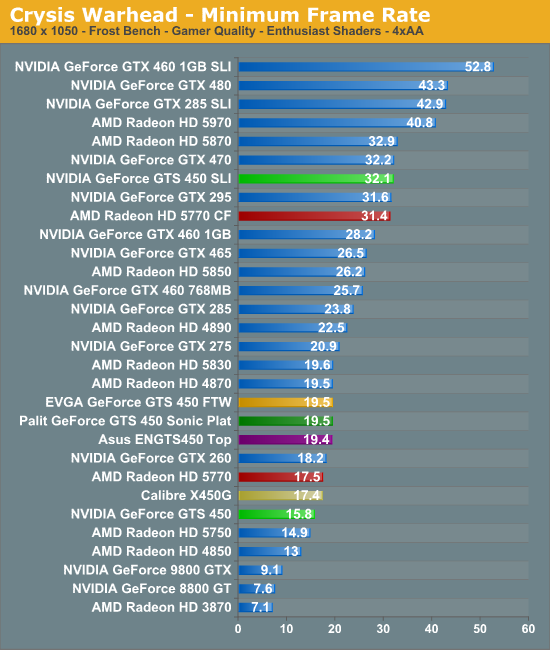
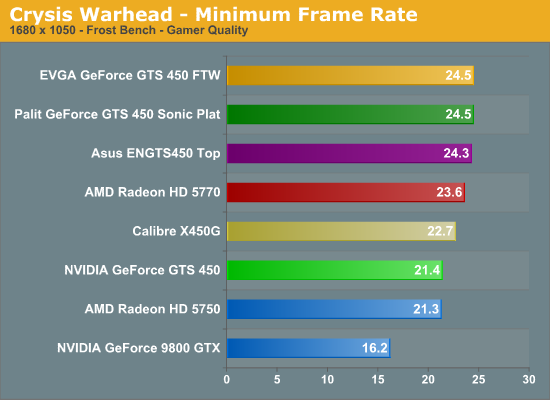
When it comes to minimum framerates the GTS 450 does a bit better here by edging out the 5750, but it takes a factory overclocked card to beat the 5770.
BattleForge: DX10
Up next is BattleForge, Electronic Arts’ free to play online RTS. As far as RTSes go this game can be quite demanding, and this is just at DX10.
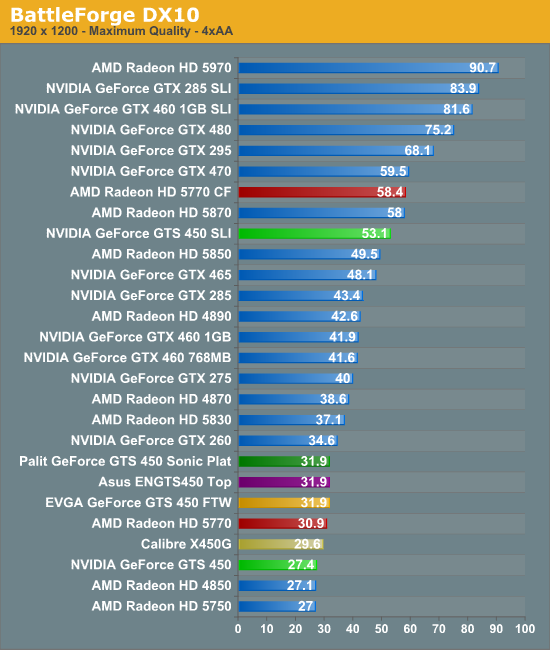
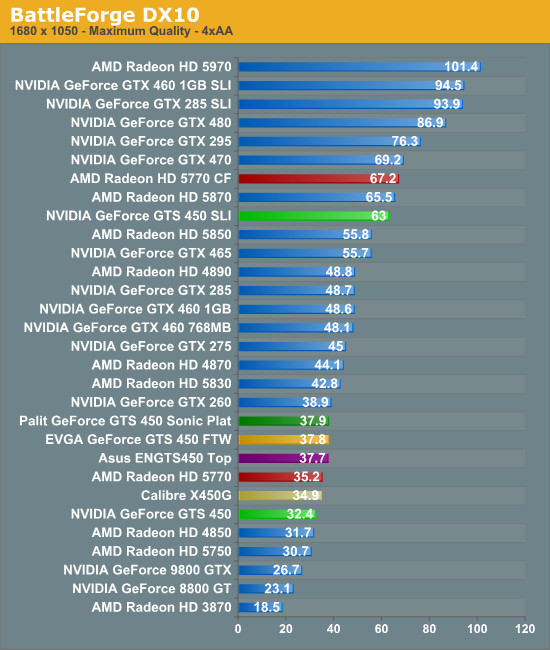
Although at these settings our cheapest cards skirt with the 30fps threshold, everything manages to clear it. This game is good example of where the 450 is overall: it’s right in between the 5770 and 5750. For the reference-clocked cards this isn’t a good place to be, while the factory overclocked cards more handily beat the 5770 at the cost of a higher price.
BattleForge: DX11
While BattleForge can be tough under DX10, under DX11 it’s even more brutal. Here we use the DX11 renderer and turn on screen space ambient occlusion (SSAO) to its highest setting, which uses a DX11 ComputeShader.
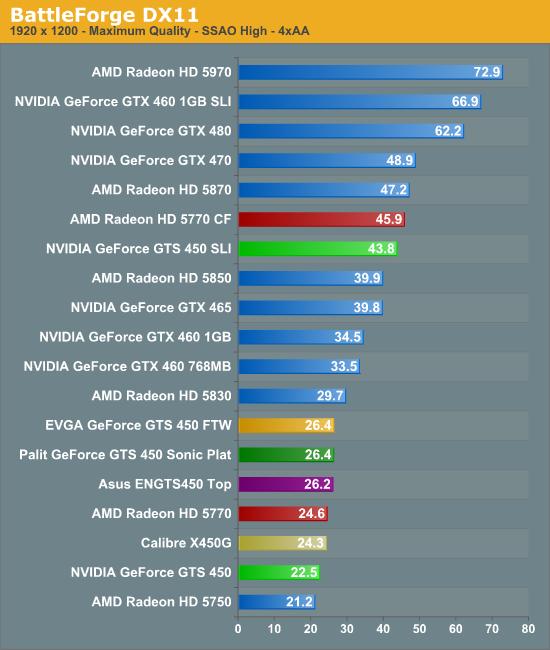
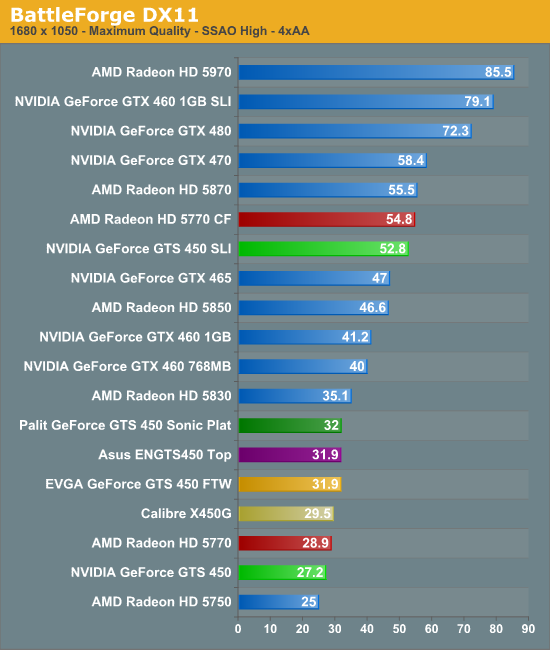
The added complexity of DX11 always hurts performance, a dicey situation for the GTS 450 which already sat on the threshold of 30fps at 1680. DX11 does the reference card in here, but it also does in the 5700 series, where the GTS 450 closes the gap. Overclock and you can break the 30fps threshold, and in the process the 5770.
HAWX
Ubisoft’s aerial action game is one of the less demanding games in our benchmark suite, particularly for the latest generation of cards. However it’s fairly unique in that it’s one of the few flying games of any kind that comes with a proper benchmark.
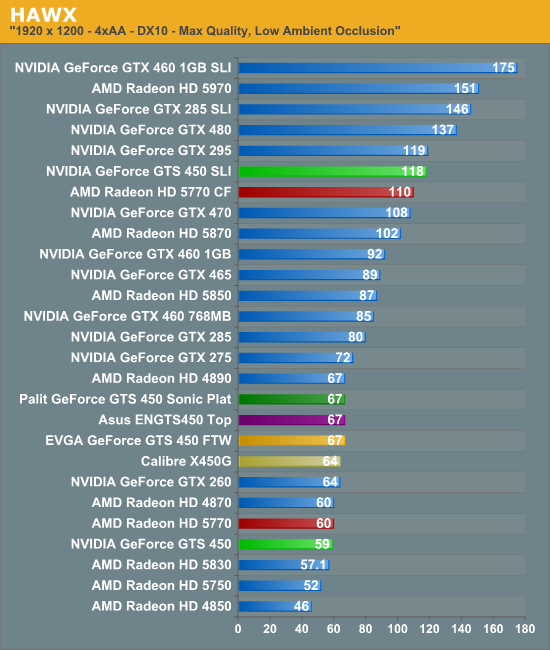
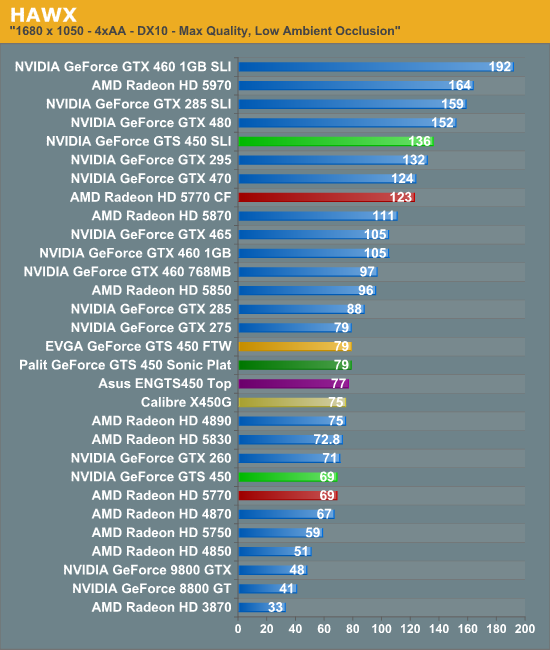
HAWX is without a doubt one of the GTS 450’s better games. Here the reference card reaches parity with the 5770, and the factory overclocked cards trample it. We even see the GTX 260 fall to the overclocked cards here, showing that in the right situation the GTS 450 isn’t just the GTS 250’s replacement, but a sometimes-replacement for the GTX 260 too. With HAWX 2 due soon, hopefully for NVIDIA this pattern continues.
Left 4 Dead
Introduced in 2004, Valve’s Source engine continues to live on in new Valve games. At this point even newer Source games like Left 4 Dead are rarely GPU limited to a significant degree, but we keep it on here due to the fact that we’re expecting at least one more souped-up Source game next year’s in Portal 2.
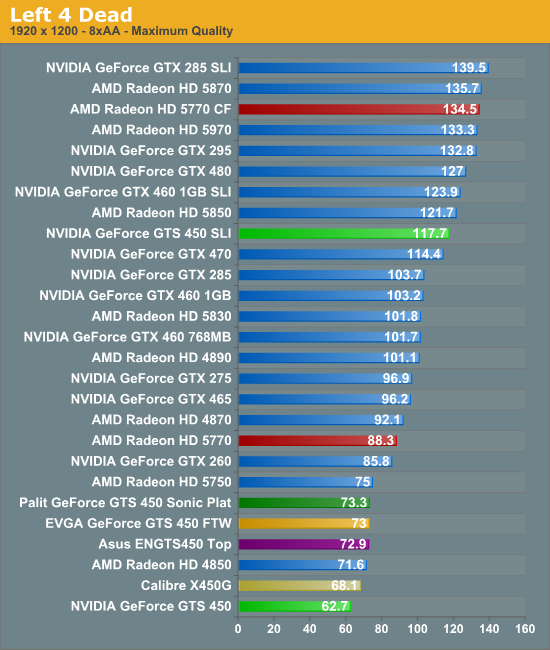
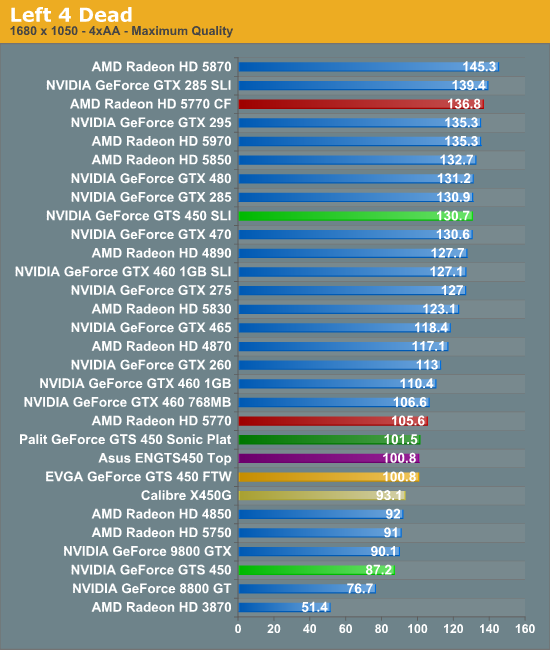
Left 4 Dead is an interesting title as when we throw a slow enough card at it, the CPU limitations give way for a new set of limitations: texturing. The GTX 460 could barely break away from the 5770 here, putting the GTS 450 in a particularly precarious position. Unfortunately for the GTS 450, it falls well below the 5770 and is even outdone by the 5750 by a few frames per second. At 87fps at 1680 this is largely academic, but it showcases where a worst-case scenario might lie.
On the plus side, even at 1920x1200 with 8x anti-aliasing, the GTS 450 still delivers better than 60fps, offering a solid example of why just about anything can play Source engine games at this point.
Battlefield: Bad Company 2
The latest game in the Battlefield series - Bad Company 2 - is another one of our new DX11 games and has been a smash hit at retail. It’s also surprisingly hard on our GPUs, enough so that we can say we found something that’s more demanding than Crysis. As BC2 doesn’t have a built-in benchmark or recording mode, here we take a FRAPS run of the jeep chase in the first act, which as an on-rails portion of the game provides very consistent results and a spectacle of explosions, trees, and more.
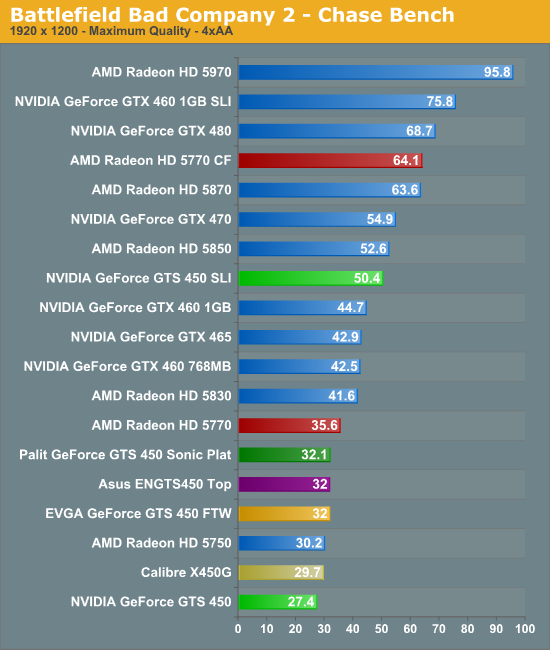
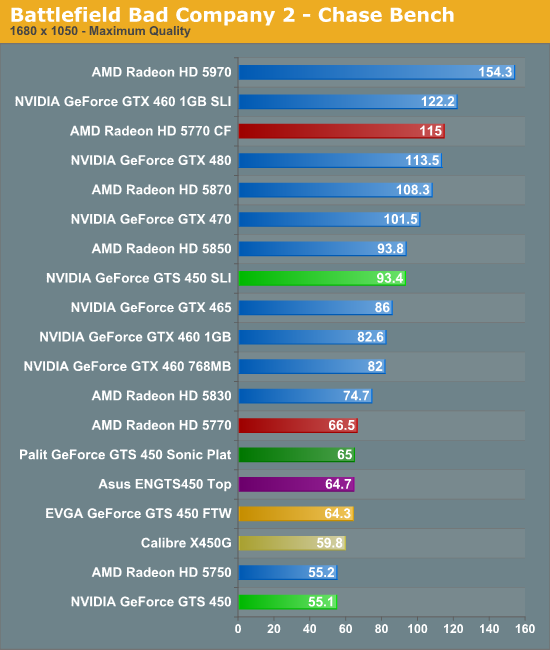
At 1680 and without anti-aliasing, Bad Company 2 provides for a smooth gameplay experience across our entire range of cards. Unfortunately for NVIDIA this is a game AMD traditionally does well in, so the GTS 450 isn’t particularly competitive; it can only match wits with the 5750. Even with a hefty overclock, the 5770 still manages to edge everything out here. Based on these results and our previous GTX 460 results, it looks like we’re shader limited for the most part, in which case a “full” GF106 card wouldn’t do noticeably better here.
STALKER: Call of Pripyat
The 3rd game in the STALKER series continues to build on GSC Game World’s X-Ray Engine by adding DX11 support, tessellation, and more. This also makes it another one of the highly demanding games in our benchmark suite.
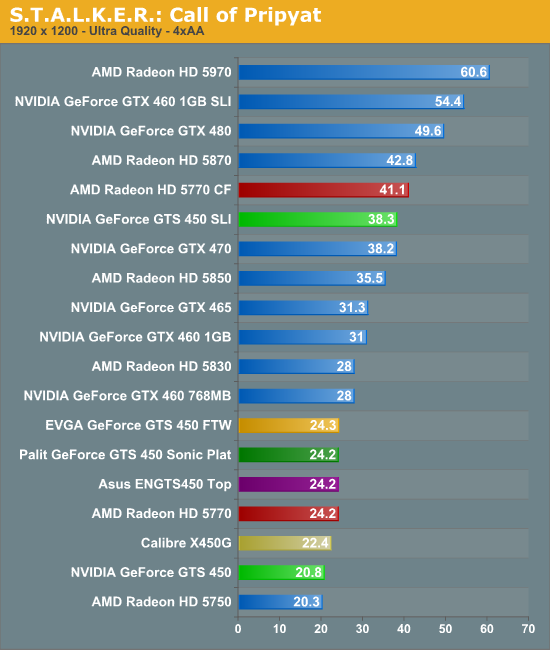
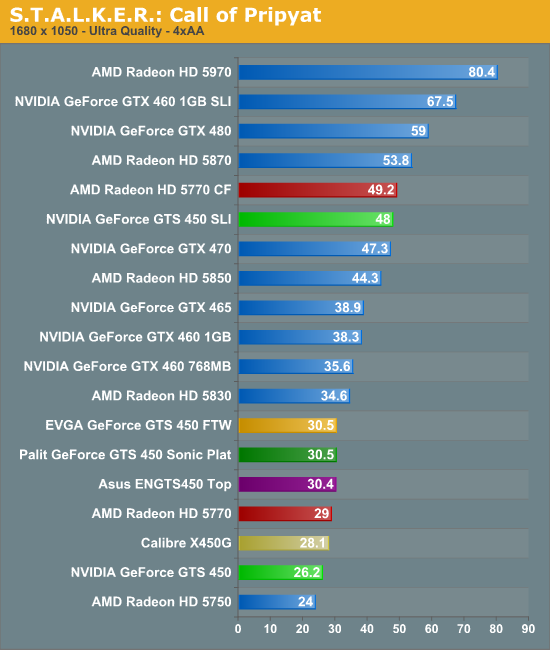
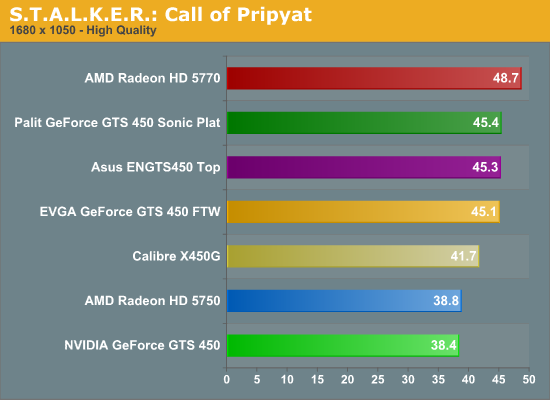
As with Crysis, the GTS 450 couldn’t quite break 30fps at our usual Ultra settings. So we ran a smaller collection of cards at high to nudge the framerate up.
At our usual 1680 settings the GTS 450 is roughly half-way between the two Radeon 5700 series cards. But at our more playable settings, it falls to parity with the 5750. At higher settings Stalker is particularly hard on shaders, so once again it looks like we’re running in to a shader bottleneck on the GTS 450. Meanwhile the overclocked cards can match up to the 5770, but only at our usual not-quite-playable settings.
DIRT 2
Codemasters latest racing game marks the return of a racer to our benchmark suite. As the first DX11 racer, DIRT 2 makes pretty through use of the DX11’s tessellation abilities, not to mention being the best looking racer we have ever seen.
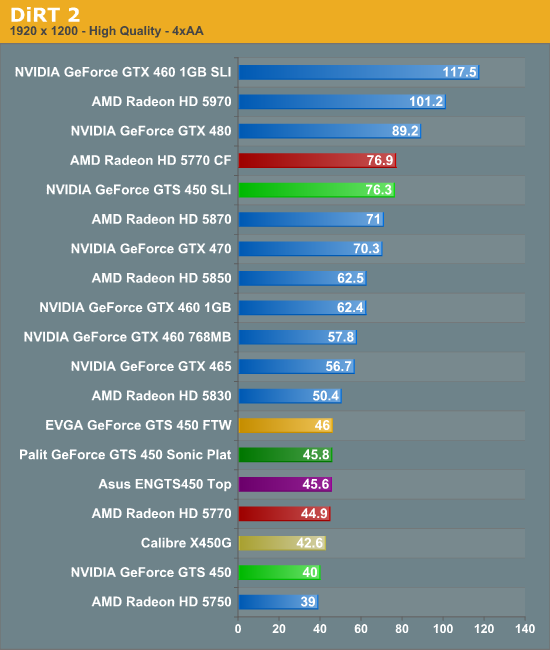
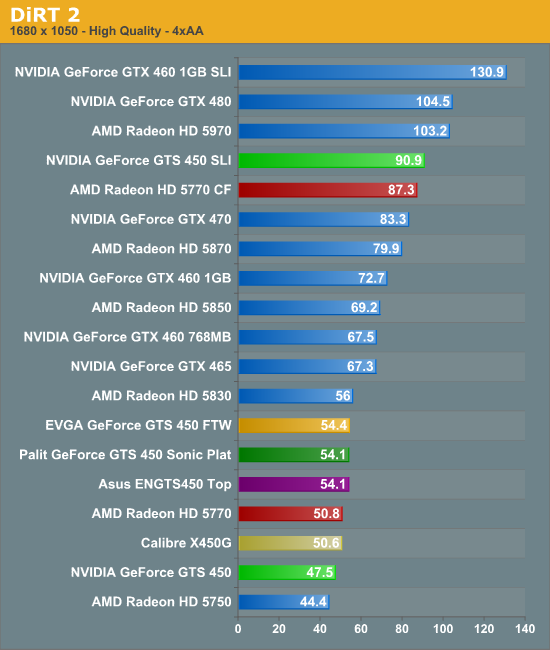
DIRT 2 is another game where the GTS 450 fits in comfortably between the 5750 and the 5770. And it performs well enough that even 1920x1200 with 4x anti-aliasing is an option, depending on how playable you find 40fps for a racing game. Overclocking is necessary to beat the 5770 however.
Mass Effect 2
Electronic Arts’ space-faring RPG is our Unreal Engine 3 game. While it doesn’t have a built in benchmark, it does let us force anti-aliasing through driver control panels, giving us a better idea of UE3’s performance at higher quality settings. Since we can’t use a recording/benchmark in ME2, we use FRAPS to record a short run.
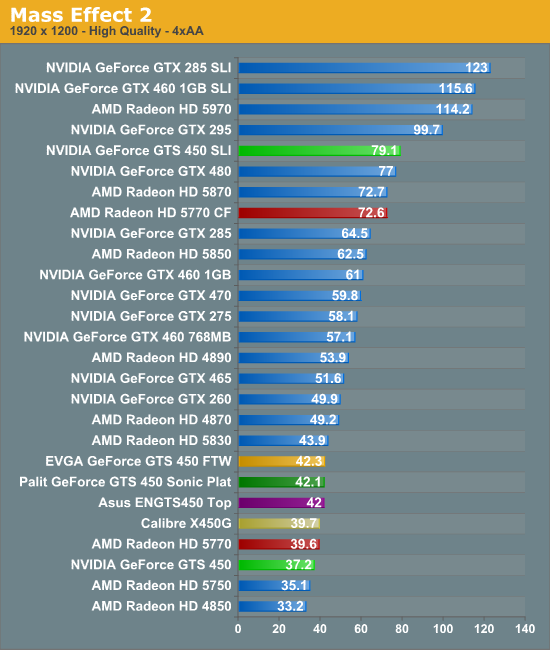
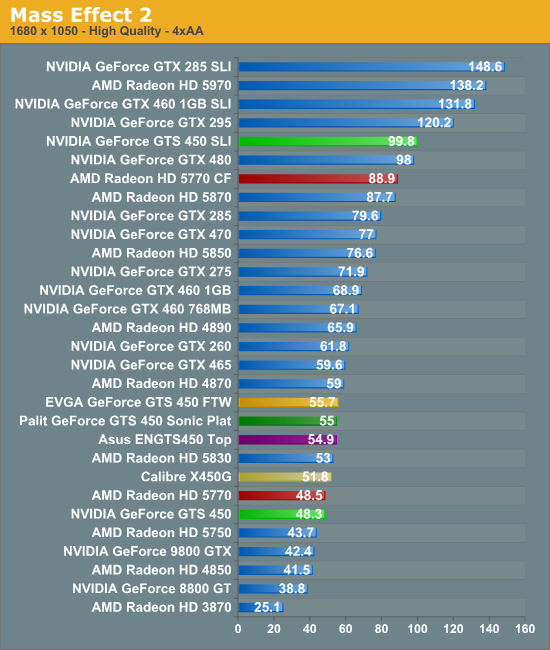
Like HAWX, Mass Effect 2 is one of the GTS 450’s best games. Here it’s in a dead heat with the Radeon HD 5770 and leaves the 5750 in the dust. With overclocking taken in to account and it can approach the 60fps threshold at 1680 with 4x anti-aliasing. 1920 is also playable, but 37fps may not be the best choice for this game.
Wolfenstein
Finally among our revised benchmark suite we have Wolfenstein, the most recent game to be released using the id Software Tech 4 engine. All things considered it’s not a very graphically intensive game, but at this point it’s the most recent OpenGL title available. It’s more than likely the entire OpenGL landscape will be thrown upside-down once id releases Rage next year.
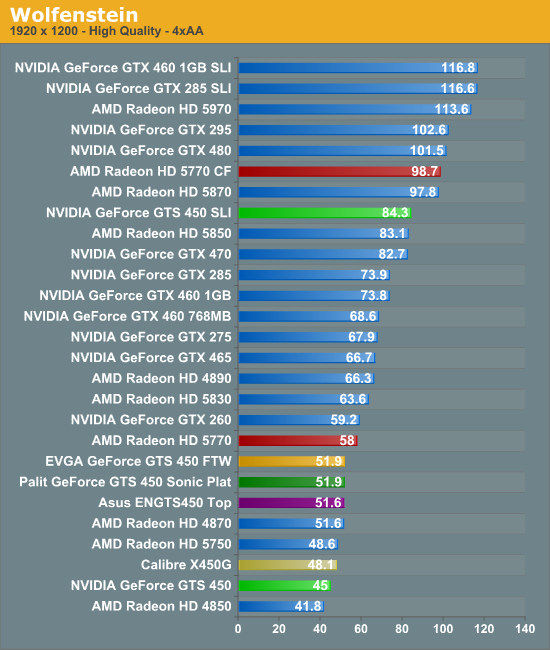
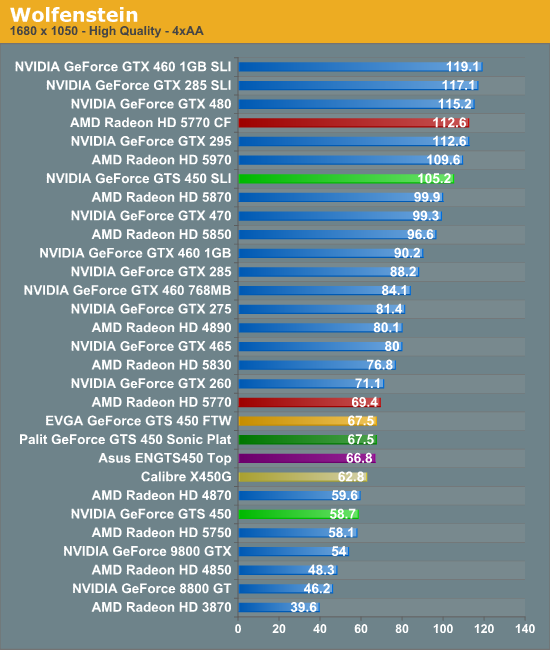
Wolfenstein is a game where the fact that the GTS 450 isn’t a “full” GF106 part likely comes to hurt it. Just skating by the 5750, it’s in no way a threat to the 5770. Even the factory overclocked cards still miss that mark by a couple of frames per second.
Compute & Tessellation Performance
As we mentioned in our look at the new Forceware 260 driver set, the drivers provided by NVIDIA for our testing of the GTS 450 have a broken OpenCL component, so we had to cut our compute benchmarking short by dropping our OpenCL benchmark. Furthermore our pre-release version of Badaboom with Fermi support doesn’t work either, so that also was dropped. What we offer instead is a much more abbreviated look at the GTS 450’s compute performance.
As was the case with GF104, GF106 is a superscalar design. With 2 warp schedulers, only 2 banks of 16 CUDA cores per SM can be put in use unless NVIDIA’s hardware can extract a degree of instruction level parallelism from the resulting code. As a result all of these GF104-derrived GPUs have a wider range of compute performance than what we’re used to. At the best case scenario of being able to extract ILP every clock, we achieve peak theoretical performance. The worst case scenario is 2/3rds that performance. So the GTS 450 can perform between a 192 CUDA core and 128 CUDA core card depending on the application in use.
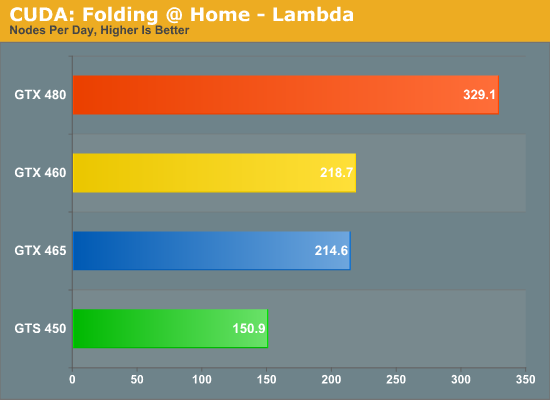
For our look at computing performance we once again have the CUDA version of Folding @ Home. Using the Lambda work unit, we run a short benchmark that extrapolates the number of nodes per day the card would be able to process. All things considered the GTS 450 does quite well here compared to the rest of the Fermi family thanks to its high clock speed. It may only have around 57% as many CUDA cores as the GTX 460, but the higher clockspeed means that it’s just shy of 70% of the performance. Furthermore we’ve already established that this benchmark isn’t L2 cache or memory bandwidth limited, so even though the GTS 450 isn’t using a “full” GF106 chip here, it isn’t penalized for the limitation.
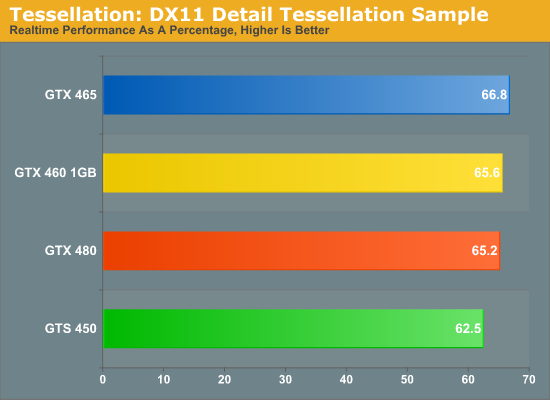
Our other benchmark is a quick look at tessellation. With the DirectX 11 Detail Tessellation sample program, we’re primarily looking at whether we can throw a high enough tessellation load at the GPU to overwhelm its tessellation abilities and bring it to its knees. In this case we cannot, as the GTS 450 scales from tessellation factor 7 to tessellation factor 11 by only a little below the rate of the GTX 480 and GTX 460, achieving 63% of its performance at factor 11 . This means that the GTS 460 should still has plenty of tessellation power for even this demanding sample, but of course this is heavily dependent on how much tessellation is used by future games.
One interesting thing is that because NVIDIA built its geometry units in to its Polymorph Engines, their geometry abilities scale in a way that AMD’s doesn’t thanks to AMD’s relatively constant fixed-function pipeline in the Radeon HD 5000 series. With the GTX 480 NVIDIA was advertising an 8-fold increase in geometry performance over the GTX 285, but with the GTS 450 NVIDIA is only talking about around a 2.4x increase over the GTS 250. This neatly showcases the much wider range of geometry performance in NVIDIA’s Fermi family. It also reinforces the fact that they need developers to fully utilize tessellation in order to maximize the geometry capabilities of the GTX 480, otherwise if a card like the GTS 450 is the geometry baseline, then scaling geometry capabilities through the Polymorph Engines will not have paid off.
Power, Temperature, & Noise
As we’ve discussed in previous articles, with the Fermi family GPUs no longer are binned for operation at a single voltage, rather they’re assigned whatever level of voltage is required for them to operate at the desired clockspeeds. As a result any two otherwise identical cards can have a different core voltage, which muddies the situation some. All of our GTS460 cards have an idle voltage of 0.962v, while their load voltage is listed below.
| GeForce GTS 450 Load Voltage | |||||||
| Ref #1 | Ref #2 | Asus | EVGA | Palit | Sparkle | ||
| 1.05v | 1.062v | 1.125v | 1.112v | 1.087v | 1.087v | ||
As all of our vendor cards are factory overclocked, it skews the average voltage high. Among our two reference cards we see load voltages of 1.05v and 1.062v, while the overclocked cards are between 1.087v and 1.125v. As NVIDIA is making every effort to promote the overclocking capabilities of the GTS 450, this should give us a good baseline of where we want to be for the best overclocks.
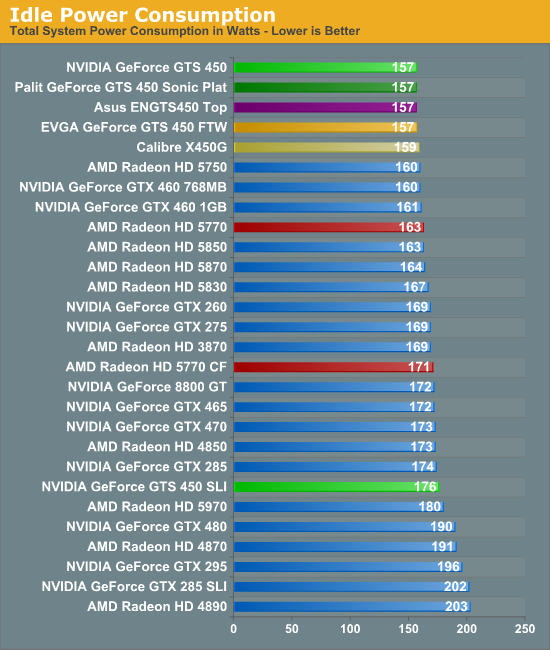
NVIDIA does not provide an official idle TDP, however it’s very clear that it must be very low. All of our GTS 450 cards bring in the lowest idle power consumption levels on this chart. We know the 5750 is rated for 16W at idle, so it’s safe to assume that the GTS 450 can beat that. Given the extremely low idle clocks of the GTS 450 (50MHz core, 270MHz memory) there’s a good chance this is the reason for the impressive idle power consumption.
We haven’t talked about SLI/CF much, but it bears mentioning here. NVIDIA doesn’t have an equivalent of AMD’s Ultra Low Power State for slave cards, which is why the GTS 450 can beat the 5770 as a single card, but lose in SLI/CF.
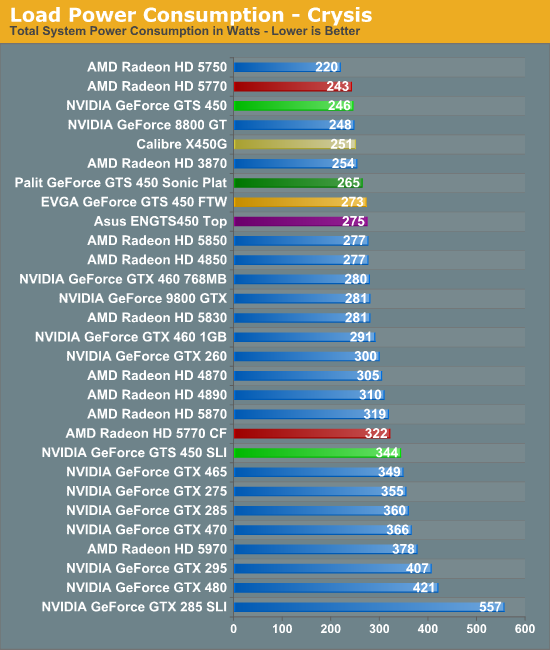
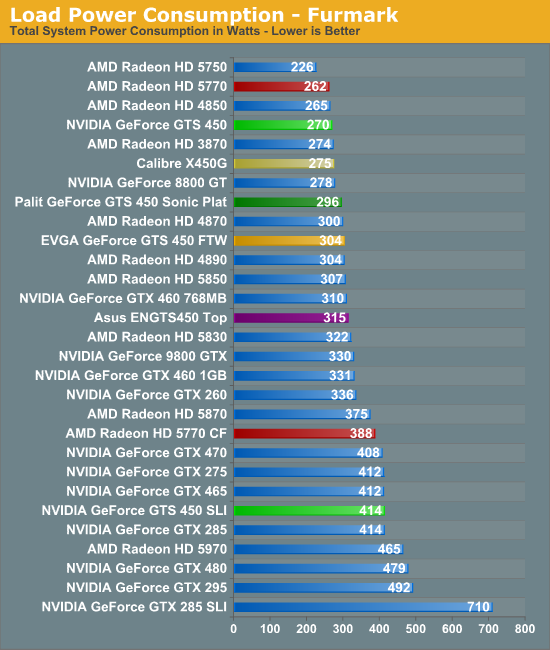
Under load the GTS 450 allows for some very low system power consumption numbers, however it can’t best the 5770. GF106 is a bigger die with more transistors so it’s not surprising that NVIDIA ends up drawing a bit more power here. But their performance also isn’t usually on par with the 5770, so they aren’t in a position to match AMD’s solid performance-per-watt. The overclocked cards do worse here of course, the worst of which is approaching 5850 power levels (and a testament to the 5850’s capabilities).
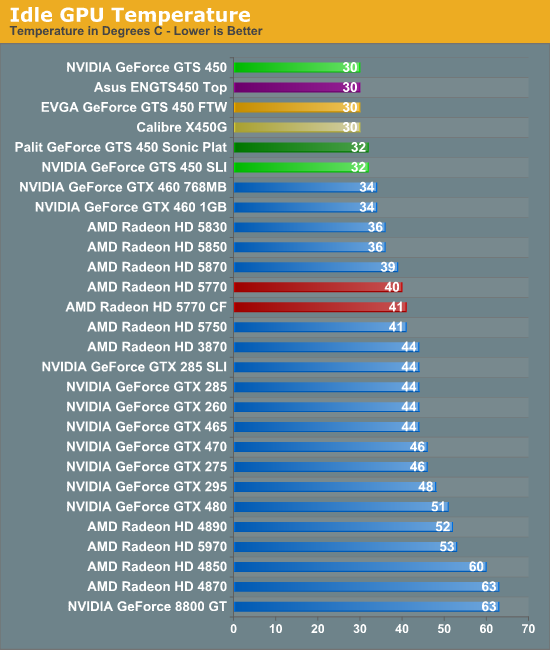
Along with giving us some of the lowest idle power numbers we’ve seen for a mainstream card, the GTS 450 also gives us the coolest temperatures. Even the GTX 460 can’t compete with the GTS 450, whose GPU barely breaks room temperature with the reference card. It’s also one of the few things the Radeon 5700 series is decidedly worse at, with the coolest of those cards getting up to 40C.
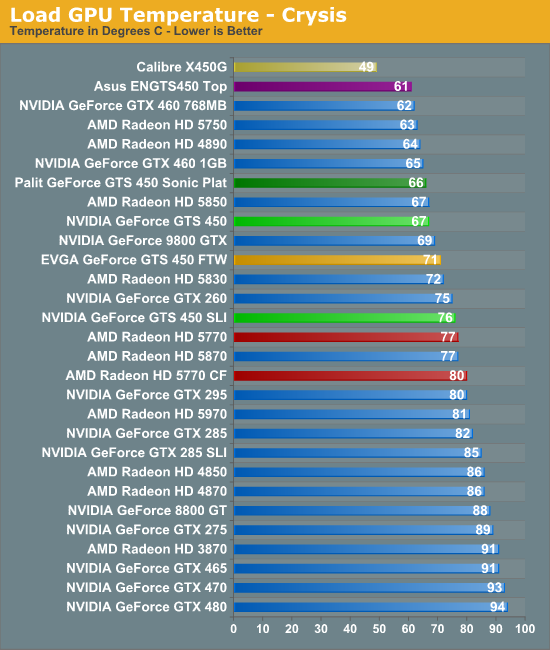
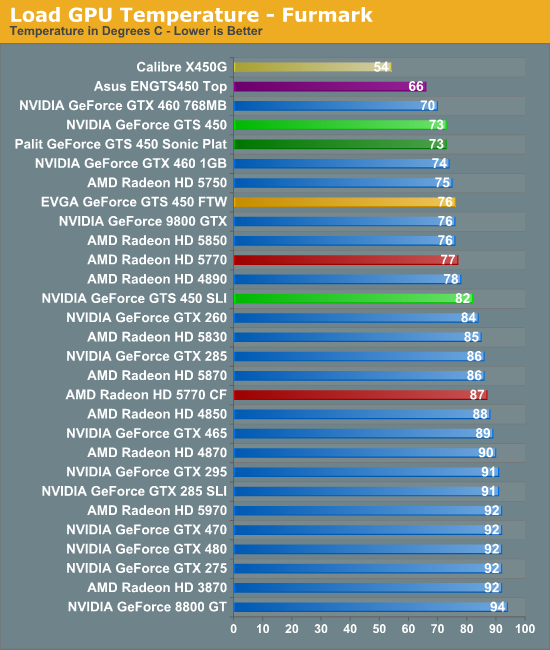
We’ll get to the Calibre card in our companion article focusing on the vendor cards, but for now we’ll stick to the reference and reference-like cards. The GTS 450 represents NVIDIA’s continued use of aggressive cooling. With a smaller all-aluminum heatsink it can’t hope to match the GTX 460, but at the same time it’s a good 10C ahead of the 5770 when it comes to Crysis. Even under Furmark the factory overclocked cards still only reach 5770 temperatures, showcasing just how good the cooling on these cards is.
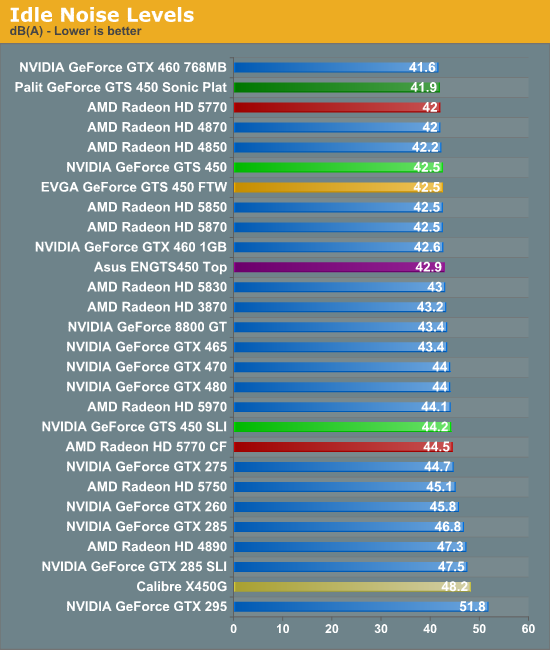
As always, the amount of noise generated at idle for a good card should be indistinguishable from other cards. The GTS 450 is no exception, generating around 42 dB(A) as we’ve come to expect.
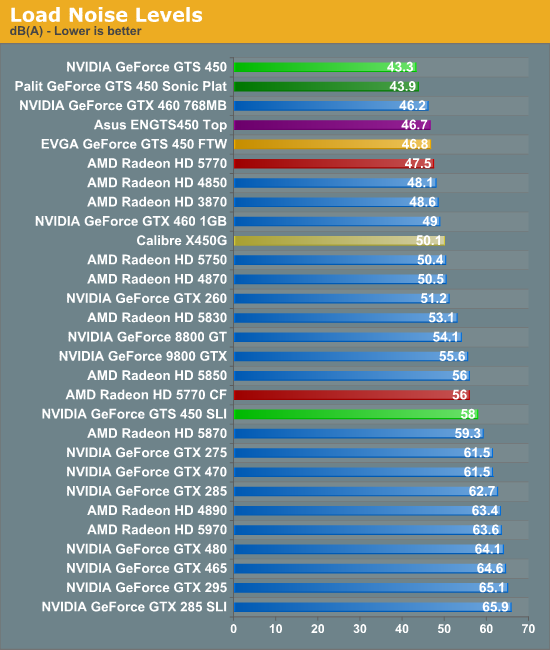
Traditional wisdom for a video card is that if you have (relatively) high power draw you can either have a cool card or a quiet card but not both. The GTS 450 breaks the idiom wide-open – we’ve already established it draws more power than the 5770, and yet our reference card barely breaks the noise floor. At 43.3dB(A) it’s effectively silent, a feat not even the GTX 460 or the 5770 can claim. If you can ventilate your case at similarly quiet levels (necessary by fact that the GTS 450 exhausts some hot air in to the case) then we’re certainly looking at a contender for one of the most balanced HTPC cards ever.
Quickly, SLI is a bit of a different story. The reference design is great for a single card, but having two of such cards right next to each other truly suffocates the first card. We’ve said it once and we’ll say it again: if you can separate your Fermi cards, it’s in your best interest to do so.
Overclocking
As we alluded to in the opening of this article, NVIDIA is once again pushing the overclockability of their GPUs. The GF106 GPU at the heart of the GTS 450 is supposed to be about as overclockable as the GF104 GPU instead the GTX 460, and there’s little doubt that this is the case. NVIDIA’s partners are already on the bandwagon, and are offering heavily overclocked cards. Or for the do-it-yourself types, even the average reference card should be quite overclockable as long as you’re willing to take the risk of the periodic dud.
The GTS 450 is already supported by the latest version of MSI’s excellent afterburner software, and keeping with their policy MSI has enabled overvoltage support for all cards using the same VRMs as the reference card. So we were able to overvolt all of our reference cards and our factory overclocked cards. The VRMs on all of the cards except the Asus card top out at 1.162v, however for safety reasons (and the fact that the VRMs aren’t even passively cooled) we limited ourselves to 1.15v.
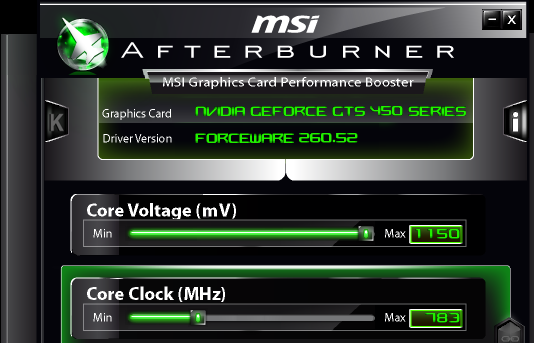
As not all of our cards are exactly alike, we’ll quickly run down the differences between the various cards
- 2x NVIDIA GTS 450 Reference
- 1x Calibre X450G. Reference PCB, aftermarker cooler, factory overclocked
- 1x EVGA GTS 450 FTW. Reference PCB, reference cooler, factory overclocked
- 1x Asus ENGTS450 TOP. Reference-derived PCB, custom cooler, factory overclocked
- 1x Palit GeForce GTS 450 Sonic Platinum. Custom PCB, custom cooler, factory overclocked
| Overclocking Results | ||||||
| Stock Clock | Max Overclock | Stock Voltage | Overclocked Voltage | |||
| GTS 450 Reference #1 | 783MHz | 955MHz | 1.05v | 1.115v | ||
| GTS 450 Reference #2 | 783MHz | 930MHz | 1.062v | 1.115v | ||
| Asus ENGTS450 Top | 925MHz | 985MHz | 1.125v | 1.115v | ||
| EVGA GTS 450 FTW | 920MHz | 955MHz | 1.112v | 1.115v | ||
| Palit GTS 450 Sonic Platinum | 930MHz | 985MHz | 1.087v | 1.115v | ||
| Sparkle Calibre X450G | 850MHz | 935MHz | 1.087v | 1.115v | ||
Unlike the GTX 460 launch where the vendor cards we had all came with a mild factory overclock, for the GTS 450 launch all of our cards have a significant factory overclock. 3 of the 4 are at 920MHz or better, which is a 137MHz (17%) overclock over reference speeds.
Even with voltage tweaking capabilities there was a very noticeable range in the overclockability of our cards. The worst card was one of the reference cards, which only hit 930MHz even at 1.15v. The best cards were the Asus and Palit cards at 985MHz. This puts the average overclock at just over 955MHz, which isn’t too far off from the factory overclocks already on some of these cards.
Meanwhile 4.2GHz seems to be the wall for memory overclocking. The GTS 450 is only equipped with 4GHZ GDDR5, so this may not be a fantastic outcome but it is realistic.
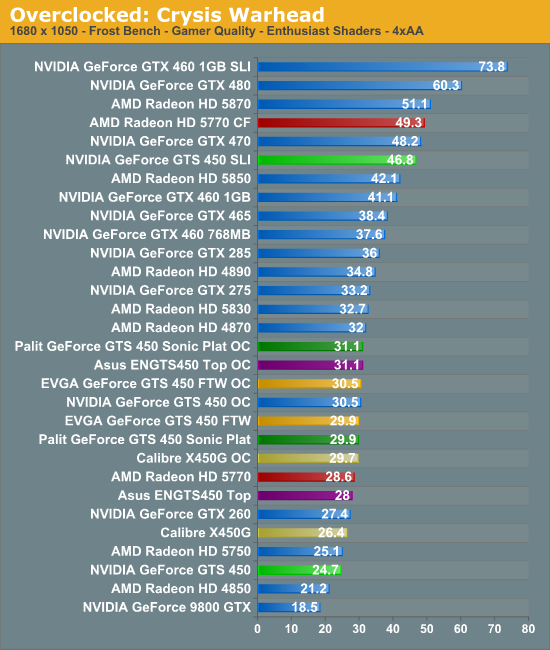
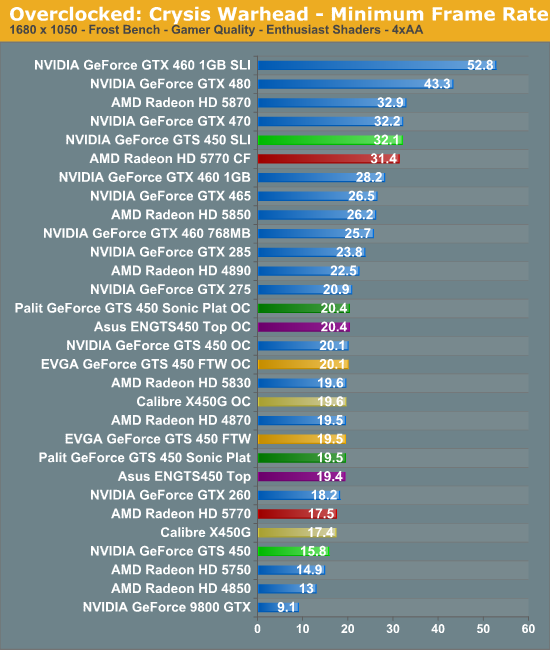
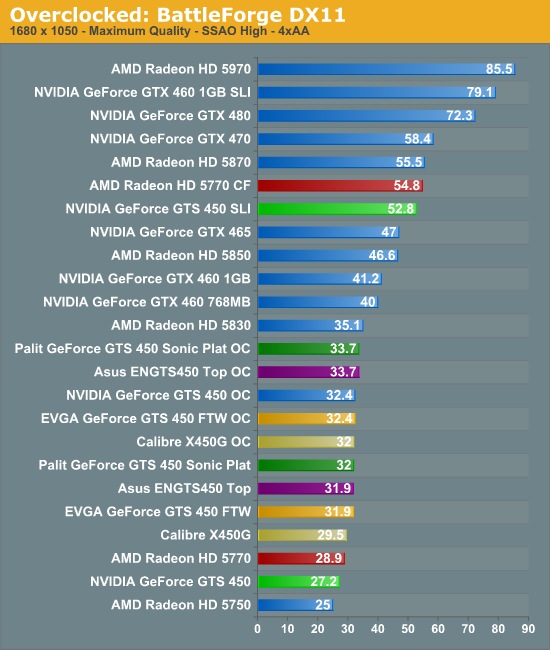
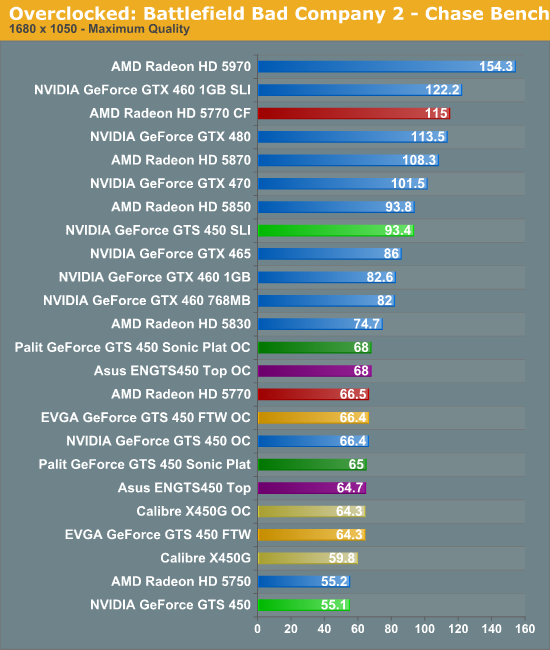
Because our maximum overclocks weren’t too much higher than the factory overclocks on some of these cards, there aren’t many surprises to be had when it comes to overclocking. With a solid overclock you can beat the 5770 most of the time, but it’s not enough to get much higher than that.
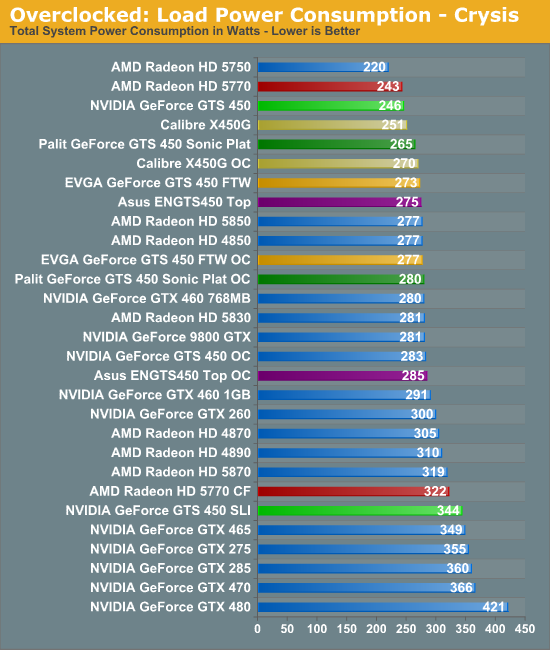
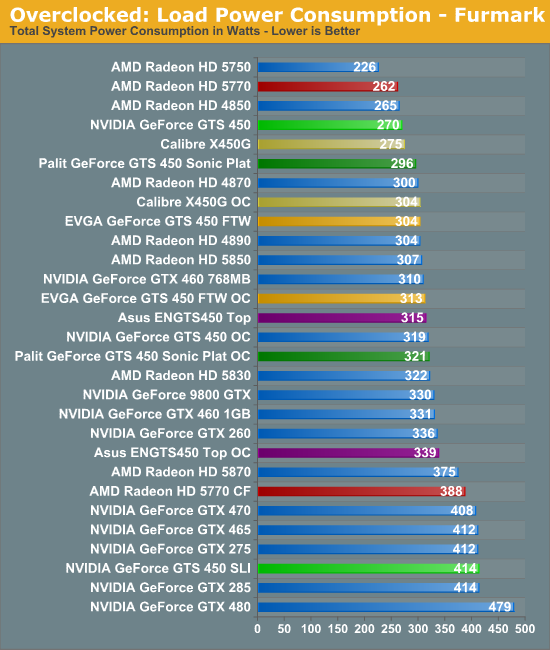
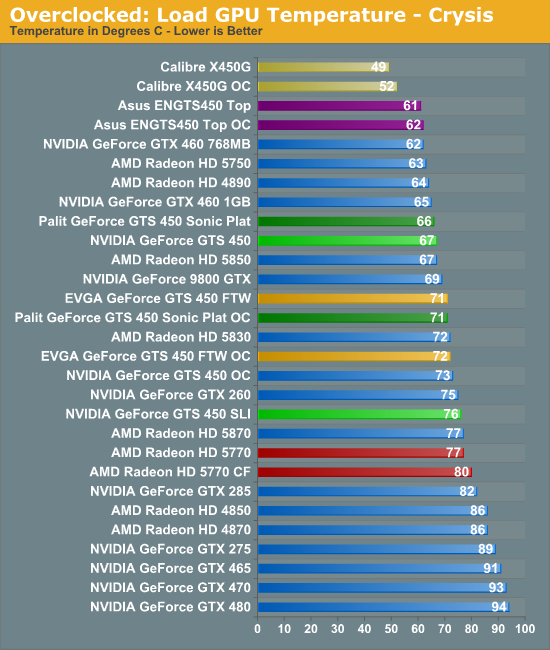
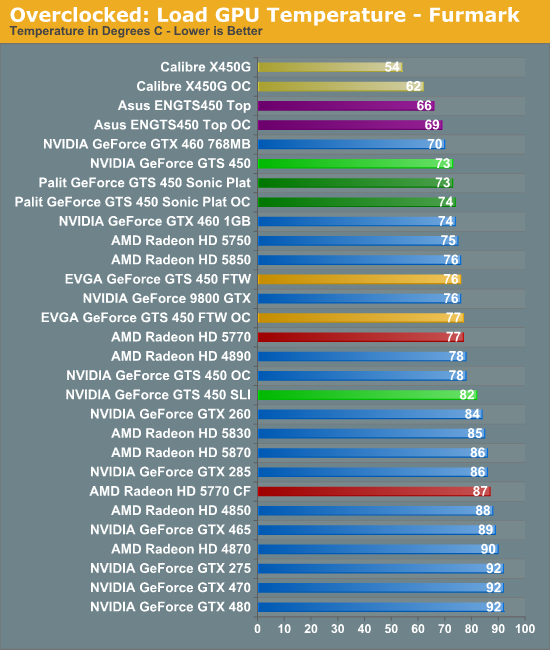
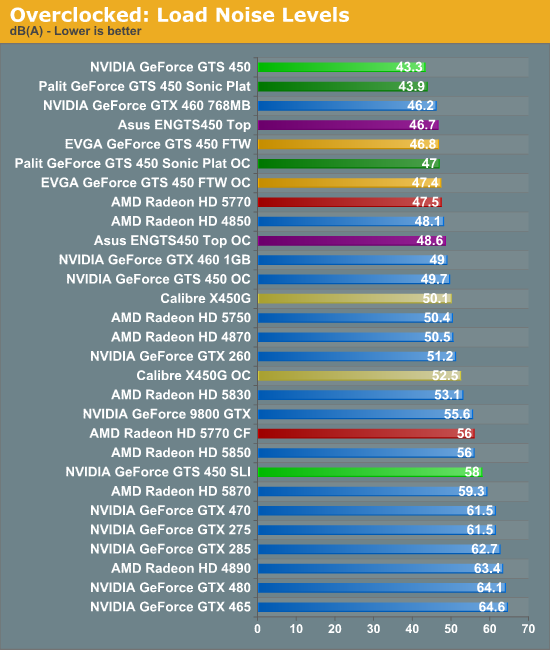
Overclocking (or rather overvolting) has the usual outcome when we look at power, temperature, and noise. The extra power enables extra performance, but it completely blows the performance-per-watt of the GTS 450 cards. Temperature and noise levels rise, but both are actually still quite manageable even at 1.15v. The only things holding the GPU back are the VRMs feeding it, and the innate limits of what the GPU can reach. Given this, it makes little sense not to overclock as long as you have a card with a suitable limit.
Finally, as a testament to how poorly a pair of GTS 450s in SLI get along with each other when they’re right next to each other, we weren’t able to get away with overvolting them at all. Even at 1.1v, the covered card would ultimately reach a thermal runaway under FurMark – the fan would max out and the temperature would start climbing in to the 90s. This shouldn’t be an issue with cards that are separated, but overclocking is definitely not on the menu when they’re packed together.
Closing Thoughts
After the launch of the GTX 460 series, we had been hoping to see NVIDIA continue to drive forward with the same level of hyper-competitiveness that we saw with the 460. In some ways that has happened today, and in some ways that hasn’t.
The GTX 460 was a card that made the comparable AMD card obsolete and brought significantly improved performance to the $200 market. NVIDIA had a card built to hit one of AMD’s weak spots, and it struck beautifully. The same cannot be said for the GTS 450 however. It’s not targeting an AMD weak spot – instead it’s going right for AMD’s stronghold that is the 5700 series, and this is a much harder job.
Had AMD kept the price of the Radeon HD 5770 at $140+, there would have been a well-defined place – however small – for the GTS 450. But instead for the time being AMD dropped the price of the 5770 to $130 and brought it in to direct competition with the GTS 450. The GTS 450 isn’t competition for the 5770; at best it’s as fast, at the worst it’s as slow as a 5750.
What’s funny is that in a roundabout way we have NVIDIA to thank for this, as their pricing tactics with the GTS 450 and GTX 460 made this price drop happen. So in a sense NVIDIA is definitely competitive on pricing. But what this gives us is a situation similar to the GTX 470 launch – a competent card priced right between two competition cards with a performance level that meant it was competitively priced, but not aggressively priced. It’s aggression that’s missing from today’s launch, the GTS 450 simply isn’t aggressive enough on a price/performance basis.
Ultimately the card is not so slow that we would completely write it off; if you need to be in the NVIDIA ecosystem for whatever reason you could grab the GTS 450 and be satisfied without feeling like you’re missing too much by not going with the Radeon HD 5770. But if you’re a free agent and have no attachment to NVIDIA’s ecosystem, there’s not a game we benchmarked today where the 5770 was more than a hair’s width slower. Thus at NVIDIA’s new $130 price point the card to get is not the NVIDIA GeForce GTS 450, it’s the AMD Radeon HD 5770. It’s a bit warmer and a bit louder than the reference GTS 450, but the performance gap is hard to argue with.
Quickly, we’ll also touch on the factory overclocked cards. A good factory overclock can wipe out the 5770’s performance advantage, the only problem is that factory overclocked cards carry a price premium that make them more expensive than the GTS 450, and by extension the Radeon HD 5770. The cheapest factory overclocked card we looked at today was the Asus ENGTS450 Top, which provided 5770-like performance for only $10 more. Ultimately our nod still goes to the 5770 because it’s $10 cheaper, but at this point we’re basing things on what amounts to little more than lunch money. For $140 you could grab the Asus card or a similarly overclocked card and be quite happy with the purchase.
Finally, there's the GTX 460 factor. With the recent price drop to $170, there's only a $40 difference between the GTX 460 768MB and the GTS 450 - and less if we're comparing it to an overclocked GTS 450. The GTS 450 is at that point on the price-performance curve where an extra dollar goes a long way (and the 5770 is just as guilty of this). If you can only spend $130-$140 then what you see is what you can get, otherwise a GTX 460 768MB is much more than a simple step up, offering upwards of 50% more performance for at most 30% more in price. Given those conditions the GTX 460 768MB is in a sweet spot that makes both the GTS 450 and Radeon HD 5770 pale in comparison.
Wrapping things up, we still have 1 more NVIDIA launch to go with: GF108. With the basic details of the chip already announced earlier this month with NVIDIA’s mobile GPU launch we already have a solid idea of how the chip is built. At this point it’s safe to assume that when it launches it will be going up against AMD’s 5500/5600 series, so stay tuned for that battle.

